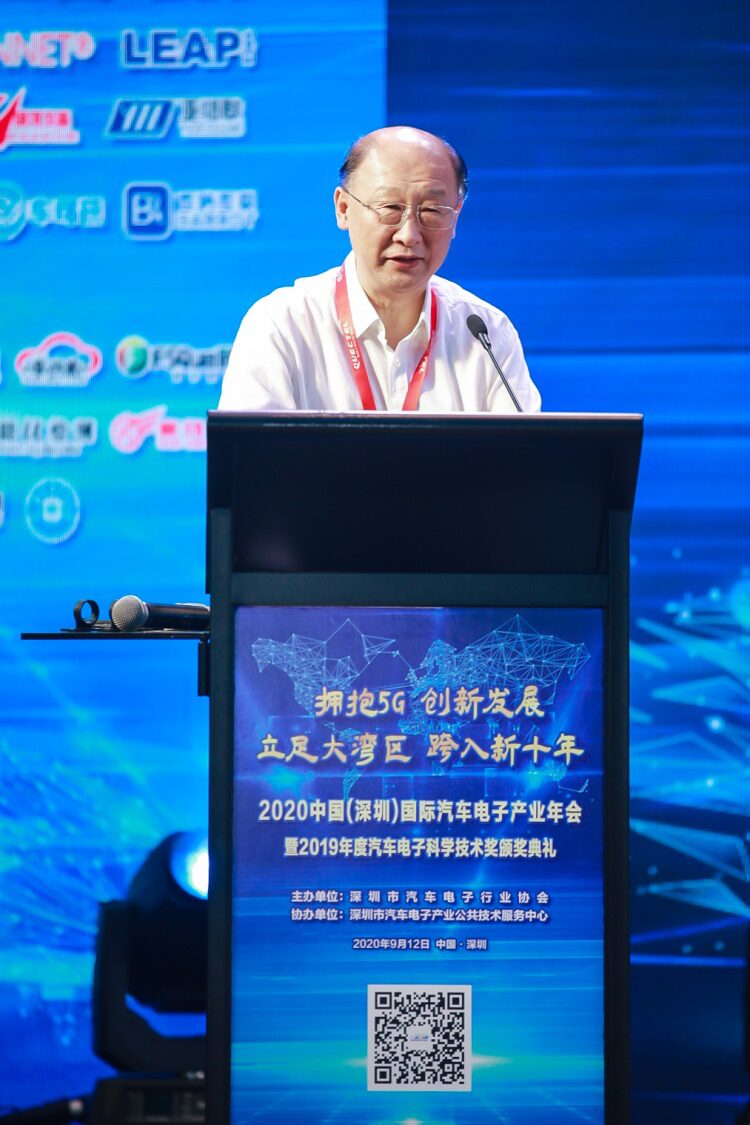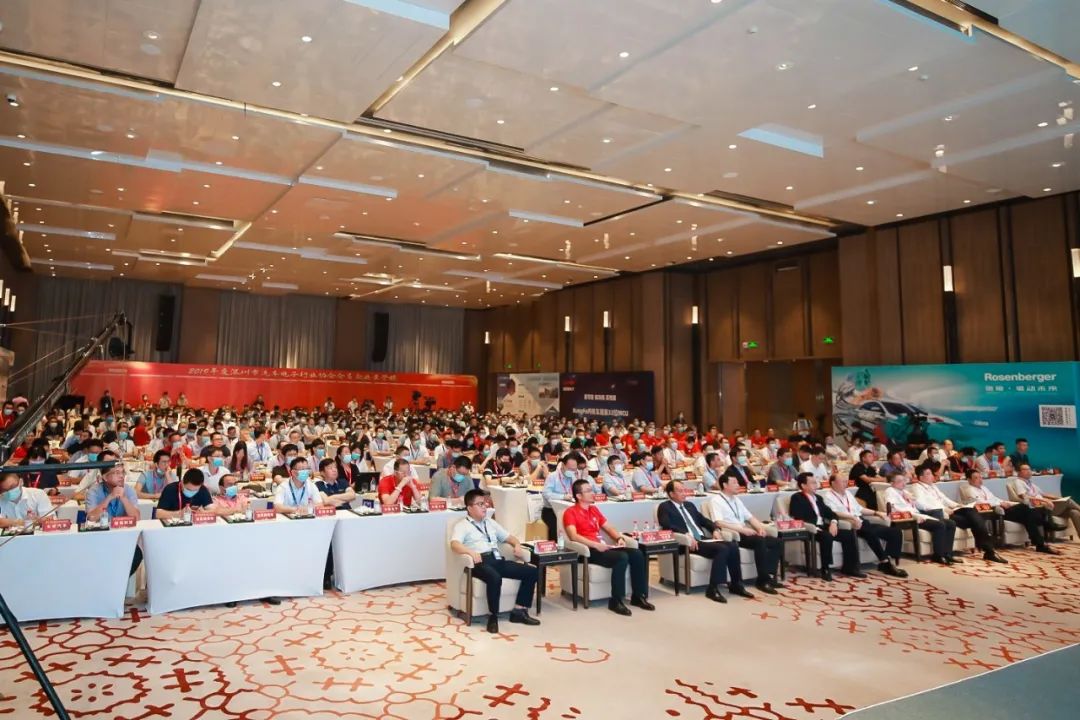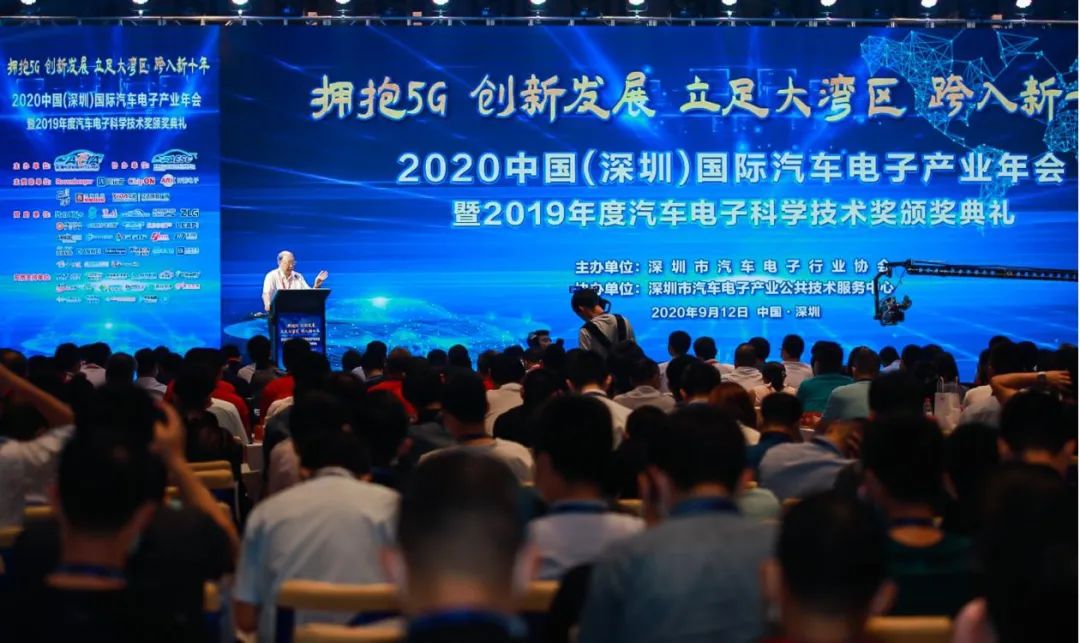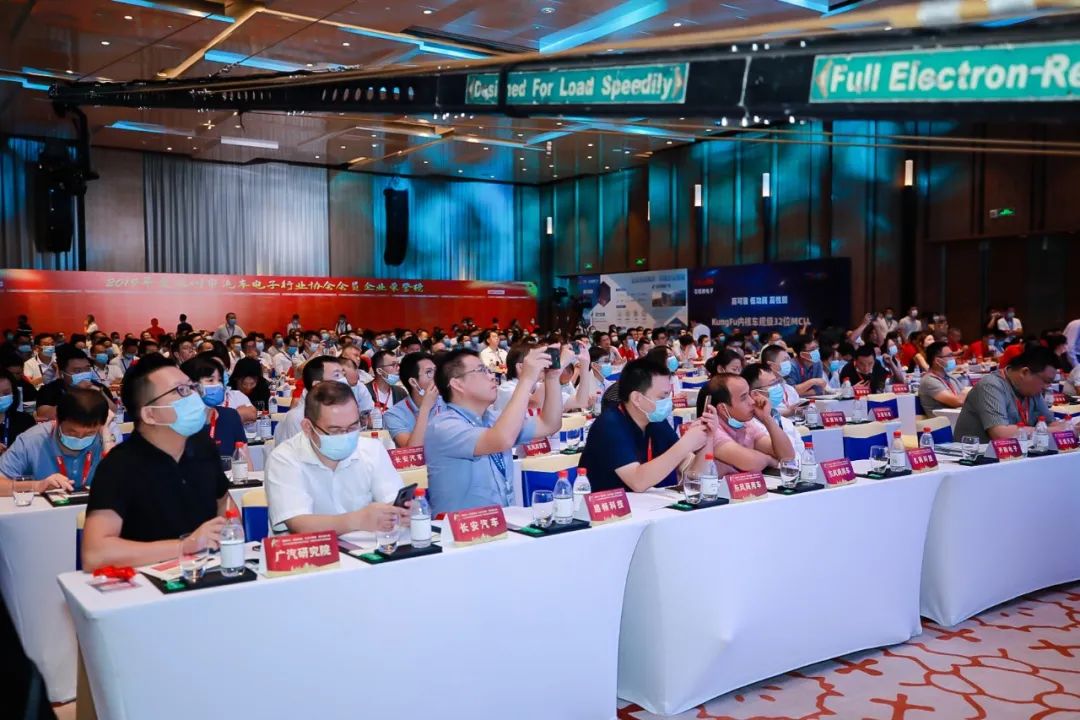
On September 12, 2020, Academician Li Jun, Chairman of the China Society of Automotive Engineers and an academician of the Chinese Academy of Engineering, attended the 2020 China (Shenzhen) International Automotive Electronics Industry Annual Conference and delivered a speech. Academician Li presented three important viewpoints: first, software-defined vehicles; second, data-driven vehicles; and third, chip-manufactured vehicles.

Conference Scene
The first point is software-defined vehicles. Everyone knows what the word “define” means. Traditional vehicles have engines, transmissions, chassis, and bodies, and later there was an electronic architecture that defined the body. These definitions are all visible during the actual process. Now when we say software-defined vehicles, why do we say software defines vehicles? Because the seven major performance aspects of vehicles, including power, economy, handling stability, speed, steering, and braking, along with reliability and durability, undoubtedly rely on software to achieve high quality. None can be separated from software. Currently, popular trends such as new energy, intelligence, and connectivity are inseparable from software. Therefore, all major OEM industry chains need software to connect them. A company without software cannot supply products, and a company without software cannot develop new products because without definition, you cannot proceed further, or if someone else defines it, you cannot produce it. Recently, many may have learned online about companies in China developing L5 software engineering setups. It is crucial to focus on software; without software, there is no future. Especially automotive software is very special software; it is embedded software. This is my experience. I was the first in China to work on engine computers in 2000 and have a strong connection with Shenzhen. At that time, we searched everywhere for computers and acquired the computer systems, and I built a 200-person software team at the Instrument Technology Center back in 2005. Hence, what I say is based on experience; I have tasted the sweetness. Now the instruments are liberated and selling very well. The software for engines and transmissions is all ours, and we define it as we wish. We can take orders based on customer needs.

Conference Scene
The second viewpoint is data-driven vehicles. Why do we say data-driven vehicles? Because the performance of all vehicles can be expressed in terms of data. Today’s topic is embracing 5G; it’s not about you embracing 5G, but rather the vehicle is 5G, termed as 5G vehicles. In the past period, there have been incorrect ideas about 5G, thinking it is merely communication. This is wrong; vehicles are digital vehicles. The demand for data, data structure, and data ownership determines what kind of 5G bandwidth and latency vehicles need. So, it is not a communication issue but an essential issue of the vehicle itself. The EU currently has a major project called “Heater”; Shenzhen, our country, is also the birthplace of 5G. Huawei is a world leader in 5G. How can Chinese vehicles become the world’s 5G vehicles? This should also come from Shenzhen, and we should promote research on it as there are opportunities. From another perspective, everyone is now working on autonomous driving and driverless vehicles. Autonomous driving and driverless technology utilize artificial intelligence, which is like a 10-year-old child; it cannot function without data. That is why Tesla has a shadow that possesses 89% of global data, making its market value surpass Toyota. We have entered an era where data is king. If you lack data, you are not a king; you may even be unable to develop vehicles. Smart driving vehicles are scenario-based; without scenario data, you do not know what the entrance scene looks like, so how can you drive here? Therefore, the second point is data-driven vehicles.

Conference Scene
The third point is chip-manufactured vehicles. Twenty years ago, we established Baosteel without automotive steel plates, without glass, tires, seat fabrics, dashboards, etc.; we have solved all these issues. Now, what can we not produce? Automotive-grade chips, series of automotive-grade chips, and operating systems for automotive-grade chips; we lack all of these. We might not even have basic Bluetooth or Wi-Fi due to restrictions. Regarding chips, Shenzhen is a hub for automotive electronics, and the chip supply chain, especially automotive-grade chips, is very unique. Currently, the import volume of automotive-grade chips far exceeds that of oil. Therefore, without automotive-grade chips, it is impossible to manufacture vehicles, and they leave us with a very wide space for innovation, which can be developed according to your own needs. Do not think that chips must be processed using lithography machines. In conclusion, Academician Li summarized that in such a setting, he initially wanted to say something light-hearted, but now China faces challenges. After listening to Director Liang Yongsheng’s grand vision, I finally suggest leveraging such a good foundation to quickly formulate Shenzhen’s automotive electronics strategy and a ten-year development plan. Thank you!
How to Find Me
1. Click the blue text at the top Shenzhen Automotive Electronics Industry Association to follow;
2. Search for the WeChat public account: “Shenzhen Automotive Electronics Industry Association” or “qidianxiehui”;
3. Scan the QR code to follow.
